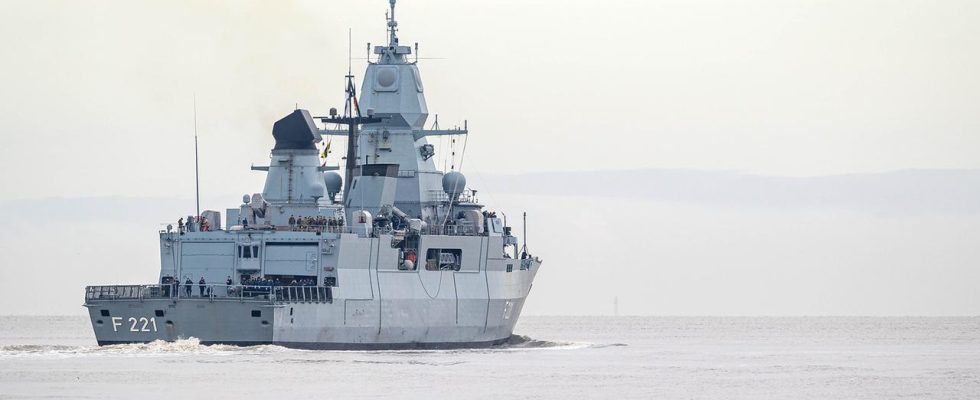faq
After more than two months of preparation, EU foreign ministers have approved the “Aspides” naval mission in the Red Sea. The use is not without risk. Answers to the most important questions.
What is the mission about?
Shipping in the Red Sea and on the adjacent sea routes has partially come to a standstill. The reason is attacks by the Iran-backed Houthi rebels in Yemen. They have been attacking merchant ships with missiles and drones since mid-November and sometimes taking them under their control.
The Houthis see themselves as part of the “Axis of Resistance” in the Middle East war directed against Israel. The militia wants to force an end to the Israeli military operation in the Gaza Strip by shelling ships, which followed the unprecedented massacre by the Islamist Hamas in Israel on October 7th.
As a result of the constant attacks, freighters and tankers can no longer use the Red Sea and Suez Canal routes to transport goods between Asia and Europe. Instead, ships have to take a detour via the South African Cape of Good Hope. The result is higher transport costs and delivery delays.
The chairman of the EU military committee, Robert Brieger, told the AFP news agency that the operation was “about tangible interests” of the EU in trade.
How does the EU want to protect merchant ships?
She responds with the naval mission called “Aspides”. The term comes from ancient Greek and means “shields”. According to EU information, at least four warships will be used, along with accompanying aircraft such as helicopters and drones. They are supposed to protect merchant ships from Houthi attacks, provide them with escort and provide maritime reconnaissance.
What is the area of application of “Aspides”?
It goes well beyond the Red Sea. According to the German government, the operation also includes the Strait of Bab el-Mandeb and the Gulf of Aden between Yemen and the African continent.
There are also the Gulf of Oman and the Persian Gulf as well as the Strait of Hormuz in between. These are considered a connecting axis between Asia and Europe for goods and energy deliveries.
Are attacks on the Houthis planned?
No, the mandate is purely defensive. A spokesman for the Foreign Office recently said in Berlin that “striking Houthi positions on land” is not part of the plans. The USA and Great Britain, on the other hand, have been attacking the Houthi rebels from the air for weeks. However, some EU countries did not want to join this US-led international coalition.
How is Germany participating?
The federal government is sending the 143-meter-long frigate “Hessen” into armed use – provided that the Bundestag gives the necessary approval this Friday as planned. The ship, which left Wilhelmshaven on February 8th, is equipped with anti-aircraft missiles and was specifically designed for escort and maritime control. There are around 240 soldiers on board.
According to the Bundeswehr, it can use its special radar to monitor airspace the size of the entire North Sea. The weapon systems are capable of engaging targets at a distance of up to 160 kilometers. Germany also wants to provide staff for the operation’s headquarters in Larisa, Greece, as well as helicopters.
What risk is there for the German occupation?
Since the Houthis have not shied away from attacks on warships in the past, Operation “Aspides” is considered comparatively risky. Marine inspector Jan Christian Kaack sees attacks by the Houthi militia with rockets, drones and remote-controlled “kamikaze boats” as threats. He recently spoke of the “most serious deployment of a German naval unit in many decades.”
At the same time, the risks are considered controllable. “There is no unit in the German Navy that is better prepared, better trained and better equipped for this,” said Kaack. Defense Minister Boris Pistorius wants to get a picture of it this Tuesday during a visit on board the frigate.
Which EU states are still taking part in the operation?
So far, commitments from countries such as Italy, Greece and Denmark are publicly known. Like Germany, Greece and Denmark want to send a frigate into action, Italy a guided missile destroyer. The high command is in Greece with headquarters in the city of Larisa.

